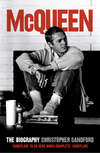Buch lesen: «Imran Khan: The Cricketer, The Celebrity, The Politician»
Etwas ist schiefgelaufen, versuchen Sie es später noch einmal
Genres und Tags
Altersbeschränkung:
0+Veröffentlichungsdatum auf Litres:
29 Juni 2019Umfang:
644 S. 7 IllustrationenISBN:
9780007341047Rechteinhaber:
HarperCollins













